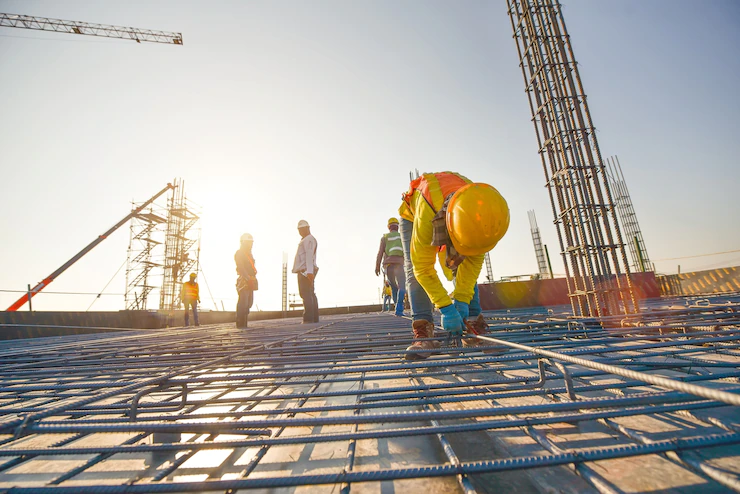When embarking on a construction project, there are many potential pitfalls that can befall even the most experienced contractor. Although it’s impossible to foresee every situation that may arise, knowing how to handle unforeseen circumstances in the moment can, as a general contractor, help you avoid costly mistakes and delays.
After all, unforeseen issues can significantly derail a project. The delays can result in financial loss, injuries that would have otherwise been preventable, loss of faith from investors, termination of contract projects, and a lack of future opportunities.
For this reason, it’s important to invest in software that can handle the unpredictability and complexity of the construction industry. For instance, you can conduct risk assessments with ALICE to model constraints and de-risk your project.
This article will provide an overview of how to mitigate the effects of unforeseen construction issues.
How To Handle Unforeseen Construction Issues As A General Contractor
No matter how much due diligence is done upon entering a contract, it’s not uncommon for unforeseen circumstances to crop up and for issues to reveal themselves mid-way through a project. If you’re not careful in dealing with these circumstances, these issues can end up costing a lot of money in the long run.
Construction software is one solution, especially platforms that provide you with feasible options for recovery and suggest ways to prevent further delay.
Timelines should allow enough time for the unexpected. While extending a project’s timeline may look bad on paper, it’s important to illustrate the cost-saving benefits of factoring in contingencies—even if that means taking longer than expected.
Moreover, understanding why unpredictable issues occur in the first place can prevent them from happening.
Reasons Why Unforeseen Construction Issues Occur
- Poor communication
- Delays in revising and approving designs
- The delivery site has not been prepared
- Project documentation is incomplete
- Financial issues
- Strikes
- Faulty planning and scheduling
- Construction errors
- Work productivity
- Natural disasters
- Delays in material delivery
- Government intervention
1. Poor communication
Poor communication between the parties involved in a project can be a silent issue waiting to wreak havoc. By the time a misunderstanding is caught, it may be too late, causing workers to have to scramble for fixes.
It’s important to clearly define project scope from beginning to end to prevent scope creep. All project elements should be coordinated between owners, general contractors, consultants, and even subcontractors to set realistic project expectations.
By doing so, all parties can efficiently plan the steps needed to sufficiently complete a project.
2. Delays in revising and approving of designs
Design revision is not uncommon and is done to maintain accuracy, but it often requires approval from several parties. Receiving late approvals can further delay the project’s timeline.
For this reason, many opt to use cloud-based software, which allows all parties involved to upload and access documents in real-time.
3. The delivery site has not been prepared
Delays can occur when there’s a lack of proper site mapping from insufficient site analysis. Therefore, it’s important for contractors and consultants to visit and analyze the conditions of a potential job site. This ensures that it will be prepared for excavation and construction. Effective planning in this case can include strategies for construction waste management, for example, to handle any debris and materials that can accumulate during the project. Proper strategies can streamline the preparation process, ensuring that the site remains clean and organized.
4. Project documentation is incomplete
Enough time should be planned for any legal documentation to be approved. After all, the construction process cannot begin without specific permissions being met.
5. Financial Issues
Be clear with all expenses and budget according to expectations. It’s crucial to ensure that all parties and laborers involved are paid on time to prevent time-consuming labor disputes.
6. Strikes
Unsatisfied laborers and contractors can cause them to walk out on the job. Ensure that all parties involved are safe and properly compensated.
7. Faulty planning and scheduling
Scheduling can be difficult due to the many moving components involved in projects. Although traditional construction planning methods like PERT or CPM are helpful, they’re not very flexible when it comes to unforeseen issues. Plus, they tend to be quite inefficient when projects grow in size.
8. Construction errors
Construction errors, although preventable, do happen, and they demand a significant amount of time and resources to fix. It’s best to budget time for the possibility of errors. This will ensure adherence to a given timeline.
9. Work productivity
Make sure you’re hiring laborers and employees who are skilled enough and have enough experience to sufficiently complete tasks. Inexperience can cause them to work slower, since they may not have enough knowledge to help them deal with the unexpected.
10. Natural disasters
Natural disasters are inevitable and can cause massive financial losses. It’s advised to research the climate of the project area to ensure you’ll be prepared. Try to plan around seasons for building, beginning construction when natural disasters are the least likely to occur.10. Strikes
Unsatisfied laborers and contractors can cause them to walk out on the job. Ensure that all the parties involved are safe and properly compensated.
11. Delays in product and material delivery
Delays in material delivery are unfortunately common. Sometimes, due to government regulations or issues that manufacturers may face, materials may be delivered later than initially anticipated.
12. Government intervention
Before starting a project, research the site carefully and ensure all legal documentation is approved. Most of the time, if certain permissions are not met, the government can intervene and stop the project from completing.
Conclusion:
Unforeseen construction issues can derail projects, and sometimes, even prevent them from being completed. It would be wise to invest in construction software that allows you to run different scenarios to help you plan your projects accordingly and recover them when delays do occur.
Anticipating unforeseen construction issues can prepare contractors and owners alike. Knowing how to handle delays can prevent financial loss, loss of faith from investors, and reputational damage.
Additionals:































